When it comes to city passes and travel cards, it’s usually fairly easy to figure out whether they would be worth it for you or not. For things like the Paris Pass or London Pass, they have a list of the most popular attractions and how much they cost, right there for you to see. The Swiss Travel Pass, however, is shrouded in mystery, or at least it was until I spent several days tracking down all of the prices and benefits.
A great many of the visitors and commenters on my popular page about where to go in Switzerland on a short visit are wondering whether the Swiss Travel Pass is a good deal. Embarrassingly, I’ve always had to answer that I found the pass too confusing to confidently advise people on. Now that has all changed, after literally days of research.
Note: This article was last updated in February, 2024.
Disclosure: This is a reader-supported website and some of the links are affiliate links where a small commission is paid to help keep this site going, but the cost to visitors is the same. The Swiss Travel Pass seems quite expensive at first, so it felt like it might be hard to get your money’s worth out of it. As it turns out, it’s pretty easy to get good value, and it’ll be a good deal for many visitors.
New in 2024
Prices increased an average of 5.9% from 2023 on the Swiss Travel Passes, but the Half Fare Card remains at CHF120, which is where it’s been for many years. Train fares in the country increased by similar percentages so the value is basically unchanged. There were no other notable changes to service or the included attractions and train routes.
>>>Buy the Swiss Travel Pass online
Where to stay in Interlaken and the Lauterbrunnen Valley
Since most people reading this will be visiting the Interlaken area and I get so many questions about it, I decided to write a detailed guide on which area to stay in while visiting this area.
>>>Where to stay in Interlaken or the Lauterbrunnen Valley in Switzerland
I included many huge photos in that post so readers will be able to get a better idea of what each place looks like and they are worth a look by itself.
>>>Lucerne or Interlaken: Which to visit and how long to stay?
The article just above will help you decide on how long to spend in each of Switzerland’s two best tourist areas.
Are you 100% sure where you want to go in Switzerland? This should help
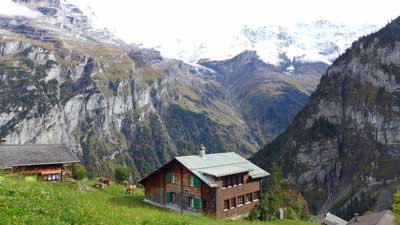
Zurich and Geneva are pleasant but dull. The good news is that Switzerland is packed with amazing sights and none of them are the big cities. If you aren’t 100% locked in yet, please read the article below and I think you’ll enjoy it.
Is the Swiss Travel Pass a good deal? Here's the short version

The bottom line is that the scenery, train journeys, and cable car rides in Switzerland are stunning and not found anywhere else in the world. They are also quite expensive if you pay for them one at a time. So no matter how you visit Switzerland, you are going to be paying quite a bit, or skipping the absolute best things that you’ve come there to see.
With good planning it’s quite easy to get great value out of a Swiss Travel Pass, but it might be a poor choice for those who don’t like to plan ahead. You can easily do a scenic train ride and a cable car in the same day, and still have time to do a scenic hike in the process.
First class or second class? Good news for most people
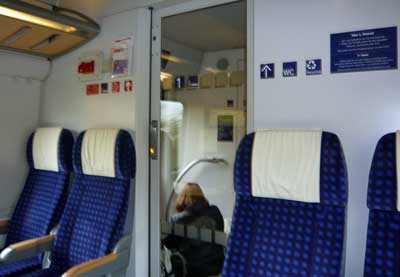
That said, Swiss Trains are literally the nicest in Europe and even the Second Class seats and carriages are nicer and roomier than trains in neighboring countries. The First Class seats are larger and nicer with only 3 across the cabin instead of 4, but honestly Second Class is perfectly comfortable for almost everyone.
Again, First Class on European trains like this is generally popular with business travelers where the company is paying and they need to get work done during the ride, and also senior citizens who don’t want to worry about a carriage full of backpackers. For most of the rest of us, Second Class is more than comfortable enough and the seat width and legroom compare to business-class airline seats. I’m a big and tall guy and I almost always travel in Second because it’s plenty comfortable enough and all the seats arrive at the same time anyway.
The longer you'll be in Switzerland, the better deal a Swiss Travel Pass will be
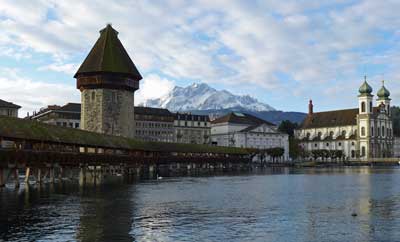
In other words, if you are staying 5 days or fewer, you have to do the math to determine your best option. But if you are spending even 6 or 7 days in Switzerland then the 6-day or 8-day Pass is almost guaranteed to be a great deal and your best choice. Once you have a Swiss Travel Pass you’ll absolutely love the ability to just hop on any train (excellent trains, always on time) and most boats and cable cars without having to worry about the cost. The per-day cost of an 8-day Pass even if you only use 6 of those days is about CHF65, and Switzerland is filled with amazing train rides and boats and cable cars that can get you that much value before noon each day.
Schilthorn (50% discount) and Jungfraujoch (25% discount) are cheaper with a Swiss Travel Pass
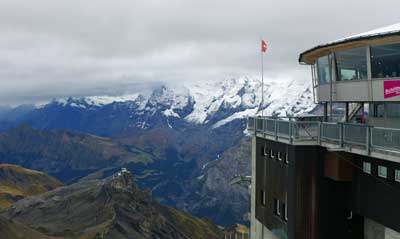
Both of those peak experiences are extraordinary and different from each other. Even so, compared to Jungfraujoch, Schilthorn is also faster and more comfortable on the way up and down. You can enjoy an excellent visit to Schilthorn in 4 hours or so (or a bit longer if you eat at the spinning Piz Gloria restaurant at the top), while a visit to Jungfraujoch requires closer to 6 hours.
NOTE: Schilthorn closes for maintenance for a week or two in late November most years.
Consider the Swiss Half-Fare Card instead
If you AREN’T going to be doing two or more of the long (and expensive) scenic train trips, you will get much better value out of the Swiss Half-Fare Card, which is explained a bit below.
Mt Rigi, near Lucerne, is 100% covered by the Swiss Travel Pass
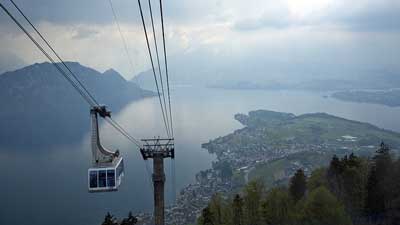
Is a Swiss Travel Pass right for you?
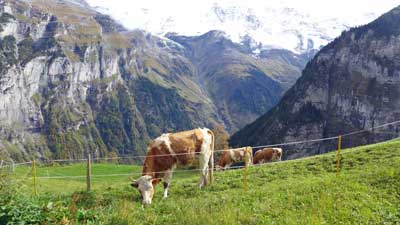
Most people only visit Switzerland for 5 or 6 days at most, so the 3-day and 4-day passes are the ones to focus on. But if you are staying for 8 days or more, those longer passes are almost certainly a great deal for you.
Long story short, if you plan on doing 2 of the more expensive scenic trains and the Jungfraujoch railway or the Schilthorn cable car, then the pass will save you money. Switzerland is expensive, but it’s worth it, and the travel pass can help make it a bit more affordable.
What the Swiss Travel Pass includes
- Free rail travel on normal trains and most scenic trains
- Discounted travel (about 50%) on popular tourist mountain trains
- Discounted travel (about 50%) on popular tourist cable cars
- Free travel on public transport in 75 towns and cities
- Free entry to around 500 museums in Switzerland
The Swiss Travel Pass covers the fare on the most popular scenic and panoramic trains. You can choose a normal seat in a regular carriage for no additional cost, but there is a supplement of CHF8 to CHF49 for a reserved seat in one of the special panorama carriages on these routes.
Prices of the 2024 Swiss Travel Pass
1st Class
- Adult 3-day Pass: CHF389
- Youth (4 to 25) 3-day Pass: 274
- Adult 4-day Pass: 469
- Youth (4 to 25) 4-day Pass: 330
- Adult 6-day Pass: 602
- Youth (4 to 25) 6-day Pass: 424
- Adult 8-day Pass: 655
- Youth (4 to 25) 8-day Pass: 469
- Adult 15-day Pass: 723
- Youth (4 to 25) 15-day Pass: 512
2nd Class
- Adult 3-day Pass: CHF244
- Youth (4 to 25) 3-day Pass: 172
- Adult 4-day Pass: 295
- Youth (16 to 25) 4-day Pass: 209
- Adult 6-day Pass: 379
- Youth (16 to 25) 6-day Pass: 268
- Adult 8-day Pass: 419
- Youth (16 to 25) 8-day Pass: 297
- Adult 15-day Pass: 459
- Youth (16 to 25) 15-day Pass: 328
Swiss Travel Pass Flex
This version costs a bit more, but you don’t have to use the travel days consecutively. It’s a great option for anyone who won’t be taking longer train rides each day.
- Adult 3 Flex days in 1 month (1st Class): CHF445
- Adult 3 Flex days in 1 month (2nd Class): 279
- Adult 4 Flex days in 1 month (1st Class): 539
- Adult 4 Flex days in 1 month (2nd Class): 339
- Adult 6 Flex days in 1 month (1st Class): 644
- Adult 6 Flex days in 1 month (2nd Class): 405
- Adult 8 Flex days in 1 month (1st Class): 697
- Adult 8 Flex days in 1 month (2nd Class): 439
- Adult 15 Flex days in 1 month (1st Class): 755
- Adult 15 Flex days in 1 month (2nd Class): 472
Where to buy the Swiss Travel Pass
The Swiss Half-Fare Card – A better option for many visitors
Far less confusing than the Swiss Travel Pass, you can instead get a Swiss Half-Fare Card, and it will be a better deal for many travelers. The price is lower and it’s much easier to do the math, and the discounts are greater on some things as well.
- Swiss Half-Fare Card for 30 days: Adults – CHF120 or US$129
What you get:
Those who buy the Swiss Half-Fare Card will get 50% discount on all trains, buses, and boats in Switzerland for up to 30 days, as well as 50% off all public transportation in 75 cities and towns.
>>>Buy the Swiss Half-Fare Card
Why the Half-Fare Card is a better deal for many
While the Swiss Travel Pass is a great deal for those doing many of the expensive scenic journeys and mountain sights within a few days, it’s not good value for those who are doing fewer of the expensive trips and/or those who are staying longer. Also, the Swiss Travel Pass only provides a 25% discount on the amazing Jungfraujoch Railway, which costs between CHF120 and CHF224 return depending on your starting point, while the Half-Fare Card provides a 50% discount.
The math is simple as well. You can just add up the cost of the trains, boats, and buses you’ll be taking while in Switzerland, and if the total is more than CHF240 or so, the Half-Fare Card will save you money.
Example itinerary:
- Zurich to Interlaken train (2nd Class): CHF50
- Schilthorn Cable Car: CHF112
- Jungfraujoch railway from Interlaken: CHF205
- Interlaken to Lucerne train (2nd Class): CHF33
- Mt Rigi roundtrip from Lucerne: CHF84
- Engelberg (near Lucerne) to Mt. Titlis Cable Car: CHF92
- Lucerne to Zurich train (2nd Class): CHF25
Total per person: CHF601
Total with Half-Fare Card (including price of card): CHF420.50
It would be tough to do all of those things in 4 days, although it is possible. If you bought a 4-day Swiss Travel Pass here is how it adds up:
4-Day Swiss Travel Pass: CHF259
Supplements for Schilthorn, Jungfraujoch, and Mt. Titlis: CHF203.25
Total cost: CHF462.25
Bottom line on the Swiss Half-Fare Card
Since the Half-Fare Card lasts 30 days and provides a larger discount on Jungfraujoch, it is better value for visitors who want to include that scenic top-of-Europe rail journey on their trip. The discounts also add up more quickly on Schilthorn and Mt. Titlis trips, just to name two examples, and you don’t have to take many longer rail journeys to get value out of the Half-Fare Card.
Swiss Saver Day Pass (A one-day unlimited travel pass)
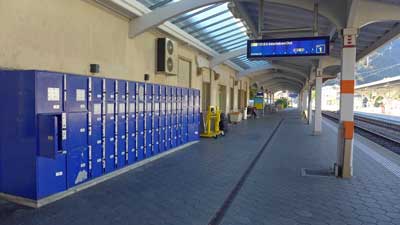
If you buy the Saver Day Pass at least 21 days in advance (and up to 60 days in advance) the 2023 cost is:
- 2nd Class (with Half Fare Card): CHF29
- 1st Class (with Half Fare Card): CHF82
- 2nd Class (with no Half Fare Card): CHF52
- 1st Class (with no Half Fare Card): CHF97
Once you research the normal cost of Swiss train fares you’ll see that the above prices are a very good deal for anyone riding more than 150 kilometers or so in a day. If you are just going, for example, from Zurich to Lucerne or Interlaken on a day, it’ll be cheaper to just buy that ticket individually. But if you are going from Geneva or Montreux to Interlaken or Lucerne then the Saver Day Pass will be much cheaper. Better still, you can use a Saver Day Pass to go from Interlaken to Geneva and back on the same day on the Goldenpass line and returning on the faster train through Bern, and it will still all be included for free.
If you don’t buy a Saver Day Pass at least 14 days in advance it’s more expensive, and if you only buy 1 to 3 days in advance it’s VERY expensive, so the key is to buy early. This is all confusing, but the Saver Day Pass should be a great option for many people only in Switzerland for one to three days.
Popular Swiss panorama scenic trains
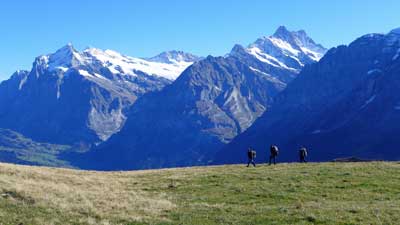
- Glacier Express
- Route: Zermatt to St. Moritz
- Train type: Panorama
- Journey time: 8 hours 3 minutes
- Distance: 291km
- 1st Class fare: CHF272
- 2nd Class fare: CHF159
- Compulsory seat reservation fee: CHF44 or 49
- Supplement for Swiss Pass holders: 13 to 33 for panorama carriage
- Bernina Express
- Route: Chur to Tirano and Lugano
- Train type: Panorama and bus
- Journey time: 4 hours 13 minutes and 3 hours 10 minutes
- Distance: 148km and 90km
- 1st Class fare: CHF113
- 2nd Class fare: CHF66
- Compulsory seat reservation fee: CHF32
- Supplement for Swiss Pass holders: 10 to 14 for panorama carriage
- GoldenPass Line
- Route: Lucerne to Montreaux
- Train type: Panorama
- Journey time: 5 hours 8 minutes
- Distance: 191 km
- Prestige Class fare: CHF131
- 1st Class fare: CHF96
- 2nd Class fare: CHF56
- Supplement for Swiss Pass holders: 8 to 15 for panorama carriage
- Gotthard Panorama Express (formerly Wilhelm Tell Express)
- Route: Lugano or Locarno to Lucerne
- Train type: Panorama and boat
- Journey time: 5 hours 21 minutes
- Distance: 182 km
- 1st Class fare: CHF164
- 2nd Class fare: CHF135
- Supplement for Swiss Pass holders: 39 to 49 for panorama carriage
- Swiss Chocolate Train
- Route: Montreux to Broc round trip
- Train type: Panorama or First Class
- Journey time: X hours X minutes
- Distance: 82 km
- 1st Class fare: CHF99
- 2nd Class fare: 89
- Supplement for Swiss Pass holders: 39
Popular Swiss scenic and theme trains
The scenic trains below are also extremely popular as sightseeing journeys rather than just as transportation, but can be used as both.
- Jungfraujoch round trip
- Route: Interlaken to Jungfraujoch
- Train type: special mountain train
- Journey time: 4 hours 41 minutes, round trip, plus time on top
- Distance: 73 km
- 1st Class fare: N/A
- 2nd Class fare: CHF224
- Supplement for Swiss Pass holders: 147 (so, a saving of CHF77)
- Gornergrat Railway
- Route: Gornergrat Railway
- Train type: Cog railway
- Journey time: 44 minutes return
- Distance: 10 km
- 1st Class fare: N/A
- 2nd Class fare: CHF90
- Supplement for Swiss Pass holders: 45
- Rigi round trip
- Route: Lucerne to Rigi
- Train type: Cog railway
- Journey time: 3 hours 25 minutes, plus time at the top
- Distance: 58 km
- 2nd Class fare: CHF78
- Supplement for Swiss Pass holders: None (this one is free with the pass)
- Mt Rigi Excursion (one-way and walk down)
- Route: Lucerne to Mt Rigi
- Train type: cogwheel train and/or cable car
- Journey time: 45 minutes up
- 1st Class fare: N/A
- 2nd Class fare: 49
- Supplement for Swiss Pass holders: 0
- Lotschberg Mountain Route and Centrovalli
- Route: Bern to Locarno
- Train type: Narrow gauge
- Journey time: 4 hours 40 minutes
- Distance: 212 km
- 1st Class fare: CHF158
- 2nd Class fare: CHF90
- Supplement for Swiss Pass holders: 5
- Jura round trip (Watchmaking Tour)
- Route: Neuchatel through Jura
- Train type: Regular
- Journey time: 3 hours 0 minutes
- Distance: 143 km
- 1st Class fare: CHF168
- 2nd Class fare: CHF108
- Supplement for Swiss Pass holders: 0
- Pre-Alpine Express
- Route: St. Gallen to Lucerne
- Train type: Regular
- Journey time: 2 hours 15 minutes
- Distance: 146 km
- 1st Class fare: CHF83
- 2nd Class fare: CHF47
- Supplement for Swiss Pass holders: 0
- Jura Foot Line
- Route: Basel to Geneva
- Train type: Regular
- Journey time: 2 hours 40 minutes
- Distance: 248 km
- 1st Class fare: CHF132
- 2nd Class fare: CHF75
- Supplement for Swiss Pass holders: 0
Popular Switzerland cable car rides
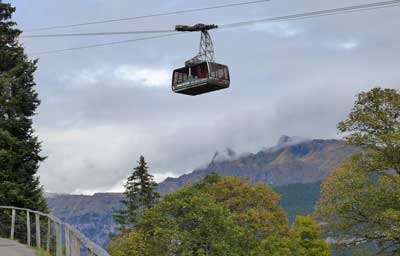
- Schilthorn
- Route: Stechelberg (Lauterbrunnen) to Schilthorn
- Train type: cable car
- Journey time: 1 hour
- 2nd Class fare: CHF108
- Supplement for Swiss Pass holders: 54
- Engelberg to Mt. Titlis cable car
- Route: Engelberg to Mt. Titlis
- Train type: cable car
- 2nd Class fare: CHF96
- Supplement for Swiss Pass holders: 46
The Swiss Travel Pass also includes free museum admission, but…
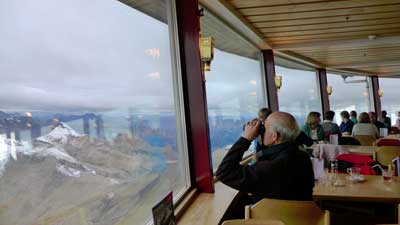
The problem is that the museums are only free on valid travel days, and almost no one would visit more than one or two museums with a Swiss Travel Pass. The trains and cable cars are so expensive that the pass gives very good value to cover those, so you don’t want to waste precious sightseeing time walking through a museum that only costs CHF10 anyway.
In other words, calculate the value of a Swiss Travel Pass on the travel savings only, and if you visit a museum here or there, then great. Most people are better off trying to squeeze in an additional train ride each day, and ignoring the museums. Switzerland is all about the outdoor scenery. As nice as the museums may be, they are not why you are there.
The pass includes free public transport in most Swiss cities
Similar to the free museum part of the offer, it’s best to ignore or minimize the value of free public transportation. It could be helpful in Zurich, but in most other Swiss tourist towns you won’t need much public transport. In fact, in Interlaken, each hotel or hostel guest automatically gets a card for free public transportation within the town (including between the two train stations).
So you might use a ride or two each day on public transport, but that won’t add up to much in terms of value of your Swiss Travel Pass.

THANK YOU SO MUCH! You’ve helped me so extremely much! I’ve been researching for hours and was getting so overwhelmed. I am so glad to hear that! I really appreciate you taking the time to reply. THANKS AGAIN!
:):)
Hi Roger,
Thanks for this awesome blog. It has been the most useful one I’ve come across thus far.
My husband and I are planning a trip to Switzerland in May of 2018 for only 3 short nights. We are eager to do as much as we can during our stay there. There is so much to do and see in Switz that I am having a difficult time planning our itinerary. We are interested in going to Interlaken, Grindelwald, Lauterbrunnen, Murren and Schiltorn. Do you think this is doable in 3 nights?
We will be arriving to Zurich by plane. Are you able to advise which order we should travel to the places listed above? I am unsure of the location of each of these places.
Another thing, we are more interested in sight seeing, hiking and exploring the quiet areas more so than any other activities. With that said, would you suggest we visit Schilthorn or Jungfraujoch?
Any information helps! Thank you kindly 🙂
Khalida,
I think I have good news for you. From Zurich Airport you’ll take a train to Interlaken Ost train station. Interlaken is a fairly large tourist town at the base of the Alps and it’s the main transit hub in the area. From Interlaken Ost you can take a train in 20 minutes to Lauterbrunnen, which is a small village deep in a valley between mountains. The town is nice and there is a lovely waterfall just outside of town, but there isn’t much to see there. From Lauterbrunnen you take a bus that waits across from the train station every time a train comes in, and you’ll take that bus past the waterfall and to a cable car station in a smaller town called Stechelberg in about 10 or 12 minutes.
From the cable car station you ride up one stop, which takes 5 minutes (leaving every 30 minutes), to a tiny and stunning little village called Gimmelwald, which I discuss in my main article about Switzerland. If you want to go to Murren you just walk across the small platform to the waiting cable car, which will take you up 5 more minutes to Murren. Murren is a much larger village than Gimmelwald and it also has amazing views of the surrounding mountains. If you want to go to Schilthorn you just take that same cable car system up 3 more stops to the top and you are there. So you can actually see all of these places in less than a day.
Grindelwald is a larger ski village in the next valley over from Lauterbrunnen and you can get there by train from Lauterbrunnen. It’s nice, but I prefer Gimmelwald and Murren if I had to choose.
The train up to Jungfraujoch leaves from Grindelwald, so you can visit the town on your way if you like. Both Schilthorn and Jungfraujoch are incredible, with views that face each other across a huge valley. Schilthorn is a bit cheaper and it’s faster to reach, but Jungfraujoch is more of an experience and the summit is a bit higher. Both are fairly quiet when you are at the top, and Schilthorn has its famous revolving restaurant called Piz Gloria that I like a lot. The food is fairly expensive, but actually typical prices for Switzerland, so if you have time for a meal there it’s an unforgettable experience as the restaurant rotates giving you a 360 degree view over about an hour. If you are staying in Murren or Gimmewald then you are already part way up to Schilthorn so I’d go there. If you stay in Grindelwald you are already part way up to Jungfrau. I hope this helps. Let me know if you have any other questions. -Roger
Hi Roger,
Thanks for the useful info. Would you be able to advise my trip?
I’m going to spend a week in Switzerland in next February, but i still haven’t decided to get which Pass. The following will be my tentative schedule:
16/2 Arrive at Zurich airport in the morning and straight to Lucern(spend a night in Lucern)
17/2 From Lucern to Interlaken
18/2 From Interlaken to Schilthorn; stay in either Murren or Gimmelwald
*19/2 From either Murren or Gimmelwald to Jungfraujoch (Or may be do this together with Schilthorn in the same day)
*19/2 or 20/2 From either Interlaken to Zermatt (spend a night over Zermatt)
*20/2 or 21/2 Take the Glacier Express from Zermatt to St. Moritz
*21/2 or 22/2 St. Moritz to Zurich and from Zurich to Salzburg(Austria)
*If I could do two summits in a day I would be able to save a day
Ought I to get Swiss Travel Pass non-consecutive 3 days or 4 days OR Swiss Half Fare Card?
What do you reckon of my plan? Please advise. Your reply is much appreciated.
Thanks a million.
Joseph
Hi Roger,
Glad that i came about your informative blog. I’m planning for a 4 days trip to Swiss. Interlaken 2 days, Lucerne 1 day, Zurich 1 day. Whilst in Interlaken, would like to go to Jungfrau top. Also would it be worthwhile getting the swiss pass? Also is it necessary to spend a night in Zurich if we are off to Munich from there?
Thanks.
Azz,
I’m glad you found this site as well. You don’t need to stay in Zurich at all and I really wouldn’t recommend it because hotels are so expensive there for what you get. Unless your flight is before 07:00 you should be able to stay in Lucerne on that last night. The train from Lucerne directly to the Zurich Airport only takes 1 hour 3 minutes and they leave several times per hour. The first train is around 05:00 and Swiss trains are famously punctual so you don’t need to worry. If you were staying at a hotel in Zurich it might take just as long to get to the train station there and then take a train to the airport.
Especially since you are planning Jungfraujoch, you will be much better off with the Half Fare Card, which is also discussed in the article above. It costs CHF120 per adult, and you save almost that much just on Jungfraujoch alone. Then you can get 50% off all of your train rides and boat rides in Lucerne, or even Schilthorn in Interlaken if you have the time. Let me know if you have any other questions. -Roger
Hi Roger,
Thank you for the great post & excellent advice. I’ve been reading about STP, Tell Pass & Half Fare Card for days however still very confused.
My husband & I will be in Switzerland from Oct 20-23 :
Zurich airport to Lucern
Lucern day trip to Mt Pilatus or Mt Rigi
Lucern to Zurich airport
can you please guide us if we should get a STP or Tell Pass or Half Fare card?
thanks,
Mozee
Mozee,
Believe it or not, if these are your only plans I think it would be cheapest to just buy as you go with no discount card. The train from Zurich Airport to Lucerne only costs CHF15 each way and takes a bit over an hour. It’s not included in the Tell Pass either. So with CHF30 for a return trip between the airport and Lucerne, it would be cheapest to pay full price to do Pilatus or Rigi. If you were to add in more train rides and local attractions near Lucerne then the Tell Pass could possibly save more. Or if you add more things outside of the Lucerne area the Half Fare Card looks better. Let me know if you have any other questions. -Roger
Hi Roger,
We would really appreciate your advice on our tour of Switzerland!
We are travelling from Munich and stopping at Neuschwanstein on the way to Lindau. We then want to make our way to Zurich but unsure if we should go direct or go via Schloss Laufen/rhine falls? Here is our plan below with optional side/day trips:
1.Dec 4th Lindau
2.Dec 5th Zurich – explore city
3.Dec 6th Zurich – potential day trip to Rhein Falls/Schloss Laufen
4.Dec 7th Luzern – Day trip to Mount Rigi
5.Dec 8th Luzern – Day trip??
6.Dec 9th Luzern – Explore town
7.Dec 10th Bern – Explore City
8.Dec 11th Bern – Day trip to Jungfrauhoch
9.Dec 12th Montreux – Explore city
10.Dec 13th Montreux – Day trip to Gruyere
11.Dec 14th Zermatt – Explore town
12.Dec 15th Zermatt – Full day skiing
13.Dec 16th Zermatt – Full day skiing
14.Dec 17th Zermatt – (via glacier express) – Chur – Zurich – Late flight to London
Do you think there are any must see highlights of Switzerland that we are missing? Not sure if we should prioritise interlakken, grindleweld, Wengen etc. Can you also recommend another day trip from Luzern on the 8th? We are planning on taking the train for this whole journey, which would be the best rail pass option for us? We also want to make sure we do a few of the scenic routes would that be possible with our plan above?
Ben,
Your plan looks very well thought out. As I’ve mentioned before and especially near the top of my main article on what to do in Switzerland, the Swiss cities are mostly below average compared to famous European cities for tourists, and the natural sights are WAY above average. That said, Zurich is a nice enough place if you can afford a decent hotel, and Montreux does have a lovely view. It’s just that Interlaken, Lucerne, and Zermatt are just so amazing in their scenery that many people consider it a shame to focus on Swiss cities and only get a few peaks of the scenery.
Rhein Falls and Schloss Laufen should be a good day trip. I haven’t been there myself, but I know they are deservedly popular. If you can fit more time in the Interlaken area I think you’d be glad you did. Jungfraujoch is arguably the single top attraction, but Schilthorn is nearly as amazing and being able to spend a bit of time in Gimmelwald (and Murren) as part of that trip provides for another experience that you’ll never forget. Grindlewald is kind of like Zermatt in that it’s a popular ski town. Wengen is also somewhat similar and all of them are lovely.
From Lucerne the three marquee sightseeing options are Mount Rigi, Mount Pilatus, and Mount Titlis, and each is a different experience. Mount Rigi is the easiest to reach because you can do it as part of a lake cruise leaving from just in front of the train station. If you have time to do one of the others it would be great as well.
It’s a tough call as to whether you’ll be better off with a full Swiss Travel Pass or a Half Fare Card. Basically, the more train trips you add to your plan, the better the full Pass works out. But if you don’t add many longer train rides then the Half Fare Card might save you more.
Speaking of train rides, if you follow the plan you have typed out you’ll already be experiencing many of the best train rides. Fortunately, almost every train ride in Switzerland is very scenic, not counting some in the immediate suburbs of Zurich. When you go from Bern to Montreux you can do the most scenic part of the Goldenpass if you take the slower route through the valley instead of the high speed train that goes around it. If you get a Swiss Travel Pass it’s probably worth adding more train journeys, but my advice to most people is to just take train rides between all the things you want to see and do, and you’ll already be in awe of the scenery. But again, if you get the full 15-day pass it makes sense to ride even more because the rides are free and the Swiss trains are famously punctual and comfortable. Let me know if you have any other questions. -Roger
Hi Roger,
Really appreciate you taking the time out to help first timers to Switzerland. I have a trip coming up soon and am pretty excited as this will be my first visit (and I’ll be travelling alone). Can you kindly take a look to see if my plan is doable and if the Swiss Travel Pass will be worth it? Also, would it be necessary to get the 8 day pass or will the 4 day pass suffice?
Day 1: Arrive in ZRH, check out Zurich old town
Day 2: Visit Rhine falls, Lake Zurich
Day 3: Transfer to Lucerne, explore Lucerne’s old town
Day 4: Mt Rigi day trip (boat to Vitznau, cog train up to Rigi Kulm, cable car to Weggis)
Day 5: Transfer to Grindelwald via Interlaken
Day 6: Jungfrau day trip (weather permitting)
Day 7: Scenic GoldenPass train ride to Montreux
Day 8: Depart Switzerland from Geneva
Much thanks! 🙂
Dan,
Your plan looks fantastic. Most people only visit Switzerland for a few days so it can be a problem trying to fit in enough highlights in such a short time. But with an 8-day trip you can go at a slower pace as you’ve described. With two days in Lucerne and two days in the Interlaken area, you should have enough time for the top highlights, but still I would probably keep Zurich to only one night or even no nights. As I’ve mentioned before, Zurich is a nice enough city, but it lacks top attractions of other European cities such as Paris, Rome, or Berlin. And also, Zurich seems to be built for people on expense accounts because even a small hotel room with a bathroom down the hall will start at US$200 per night or even more. You can get something cheaper in a remote location, but it’s just not good value. In Lucerne and Interlaken you can get a much nicer hotel for less money, and the scenery in those areas is arguably the finest in Europe.
I’d think that either the 8-day Swiss Travel Pass or just the 30-day Half Fare Card would be your best two options. Either one will be cheaper than buying as you go, and I don’t think a 4-day pass would be enough because you’d have to pay full price for too many things on the other 4 days. You could run the numbers to see if the full Swiss Travel Pass is a better deal compared to the Half Fare Card, but I’m confident that both would be good value and one of those is your best bet. Let me know if you have any other questions. -Roger
Hi Roger,
We recently came back from our trip. We followed your advice, bought the HFC and traveled throughout Switzerland by train / cable car. We had a awesome time and benefitted by the HFC! We also traveled from Grindelwald to Geneva by train (instead of our original plan of going by car) like you suggested to catch our flight from Geneva and had no issues.
Thanks a lot for all the information / suggestions!! You are doing a great job (SELFLESSLY) guiding people to plan there trip. 🙂
Thanks again!
Prachi
Hi Roger,
Please find our below itinerary and wondering if getting a pass will be worth it? Family of 4 (2 adults + 2 youths)
Day 01 – Arriving Interlaken OST to Wengen for a night stay
Day 02 – Wengen to Jungfraujoch and head to Lucerne
Day 03 – Lucerne (Resting and walking around the city)
Day 04 – Lucerne to Zurich HB to catch the TGV train
Looking forward to your reply. Thank you!
Susan,
I think you should get the Half Fare Card for the most savings. Fortunately you can also get a Swiss Family Card for free, which allows one child to ride free with a paid adult. That way you spend CHF120 for each adult Half Fare Card and then you get all your tickets at 50% off and the kids go free on trains, and 50% off on Jungfraujoch and cable cars. Let me know if you have any other questions. -Roger
Hi Roger,
We have planned trip from 26th to 28th Sep. We have booked airbnb at Fluhli, so planning to cover Lucerne and Interlaken. So just wanted to know what is the difference b/w Swiss pass and Tell Pass?
Mansi,
The Tell Pass only covers transportation in the immediate area around Lucerne, while the Swiss Travel Pass covers the whole country. Interlaken is outside of the Tell Pass area, so it’s really only good for people focusing on Lucerne. -Roger